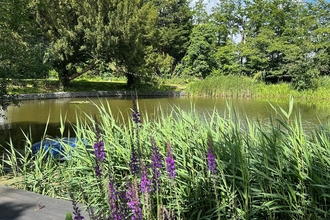Woven through Beatrix Potter’s classic countryside tales are species that are often labelled as “pests”. In particular, the farmer’s furious, never-ending pursuit of Peter Rabbit implies that much of our local wildlife poses a threat to our gardens.
Traditionally, we have opted for fencing and pesticides to keep these perceived threats from harming our gardens. However, we need to work alongside wildlife for our gardens to thrive. We need to make it a partnership rather than a battle. If we get it right, it’s a win-win; wildlife flourishes and so do our gardens.
After all, Mrs Tiggy-Winkle (Beatrix Potter’s fictitious hedgehog character) is another much loved figure in the literary world yet, in the real world, our gardening activities are directly causing hedgehog species to decline. Our reliance on pesticides is not just killing “pest” species, it is also killing wildlife that can provide incredible benefits to our garden.
Gardening is usually seen as organising the green space that we own, however the best gardens have an ebb and flow beyond our interventions. This is where the magic lies.
The Wildlife Trusts have many projects to introduce and enhance Nature Recovery Networks - joined-up, nature-rich spaces of all sizes, across all areas. Your garden can form part of that network, find out more here.
When we first started using pesticides, peat and plastics, we experienced incredible benefits. However, we are now aware of the many problems which they cause and there are so many better, cheaper alternatives…
Tips
- Look at other gardens and wild spaces near you to see what grows well - these are usually the best plants to choose. Once you’ve decided what to grow, look for pest and disease resistant varieties.
- Mix it up. For example, mixing vegetables in your veg plot can reduce pest damage.
- Dig out weeds, roots and all.
- Make your own compost. Waste material from your garden and veg will rot down and enrich your soil far better than any bought compost.
- Work alongside wildlife to get rid of pest species. For example, if we use less pesticides, ladybird populations will increase and then they will eat up pesky aphids! Similarly, by adding a hole at the bottom of the fence to welcome in hedgehogs, or adding a pond or two for frogs, they will be eat more slugs.
- Stop using peat and plastic. The extraction of peat contributes to the climate and nature crises. Look for plants that are not grown in peat, and use sustainable containers rather than plastic pots.
Would you prefer a monoculture lawn that looks like astroturf, using expensive weedkillers and requiring a lot of effort, or a lawn with a rich diversity of plants including beautiful daisies and dandelions which attracts butterflies and grasshoppers?
Find out more about chemical free gardening here.
Kent Wildlife Trust’s Wild About Gardens scheme offers a growing range of advice and opportunities to learn about wildlife-friendly gardening. Why not join us at one of our Open Garden days and get inspired by some of the wildlife friendly gardens in your neighbourhood. Find an event near you below.


